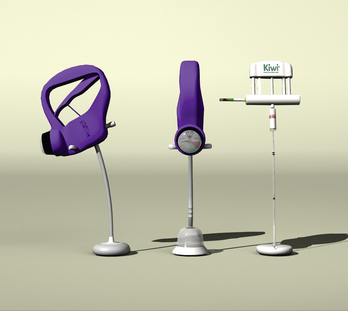Chapter 16 Vacuum-Assisted Delivery
Equipment
There are several vacuum devices in use for vacuum-assisted delivery. They all include an application surface cup that attaches to the fetal head, a handle where traction is applied, and a suction mechanism, either inherent in the device or one connected to the device through tubing that is connected to the suction. For non-outlet vacuums, devices with a freely rotating cup allow for a higher station for application (Figure 16-1).
Key steps
1. Apply cup to flexion point: Determine the fetal head position and station. The fetal head must be fully engaged in the pelvis and ideally at least +2 station. Place a pudendal block for anesthesia if no other block is present. Ensure that the cervix is fully dilated and that the bladder is empty. Consider whether an episiotomy is indicated to expedite the delivery. Identify the presenting part of the fetal head and the fontanelle that is most easily palpated. The flexion point is located 3 cm anterior to the posterior fontanelle on the fetal head (Figure 16-2). This point must be identified because it is the ideal placement site for the vacuum cup. If the cup is applied to the flexion point, the head will often restitute properly when traction is applied, even in occiput posterior presentations (Figure 16-3, A-C). Note that the flexion point is often more posterior than commonly thought, so consider this carefully when applying the cup. To apply the cup, use the first two fingers of the left hand to separate the labia. Use the right hand to insert the cup posteriorly along the vaginal wall, with the cup facing the fetal head. When over the flexion point, use the right hand to apply the cup to the scalp and activated suction to seal the cup on the fetal scalp. Check the margins of the cup to make sure that no vaginal sidewalls are entrapped before applying traction.
Stay updated, free articles. Join our Telegram channel

Full access? Get Clinical Tree



